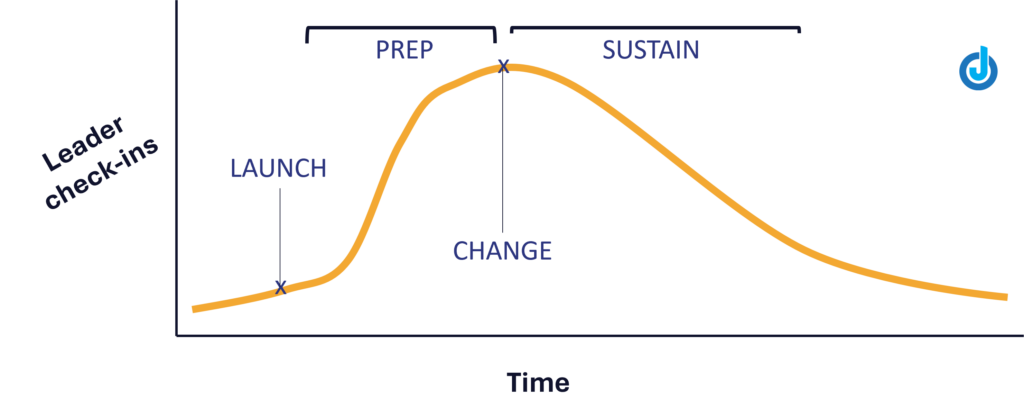The switch has been flipped. The project you’ve been working on for months is finally nearing the end. Everyone’s on board…until they aren’t. Three months later there is little evidence that the change ever took place. It happens more often than you think.
Many of my clients complain about initiatives that began with great fanfare only to fall well short as people reverted to previous ways of working. I review the systems that surround the change and we usually identify one of these typical sources:
- Project team moved on and no support
- Charismatic leader changed and focus shifted away from the project
- Measurement system not updated to track new behaviors
- Training was insufficient
- No rewards for new behaviors, or new behavior is more difficult to do
These issues do not have to spell doom for your project. There is one factor that weighs heavily on the success of every change project and can overcome these obstacles: Leadership.
When leaders:
- Pay attention to how their employees are performing
- Express support for a change and stress its importance – the why and the benefits
- Verbally recognize steps toward change
- Normalize failure
- Assist employees through inevitable missteps
- Praise success
…and keep doing that over time, new behavior becomes embedded and will be tough to break.
Concerned that your leaders cannot remember to do all of this? No problem – the tasks are all packaged up in a typical check-in which every manager should be doing regularly anyway.
They increase in frequency as employees learn about a change and begin asking questions and raising concerns. They ramp up further as employees begin learning the new skills that will be required: Leaders reinforce what has been taught and drive up confidence levels.
Check-ins peak as change comes to fruition and people need the most support, After a change, check-ins continue to sustain new behaviors.

Check-ins continue daily – if not hourly – post-go-live to keep people on track and motivated. They remain elevated through a sustainment period (at least two months!) until employees are performing well independently.
When the going gets tough, it’s easy to revert to old ways of working. Check-ins are common practice for high-performing leaders. They are mandatory during change. Are you modeling and mentoring the check-in for your leaders?



